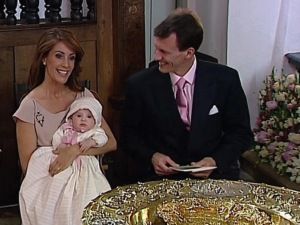News
Danish state church still haemorrhaging members – but more slowly
This article is more than 7 years old.
The pews are still emptying in the Danish church but not as fast as previously and mainly in urban areas

The good news is that it’s not only the royals who are having their children christened (photo: flickr/Comrade King)
The trend is clear: new figures from national statistics keeper Danmarks Statistik reveals that people are still leaving the Danish state church, Folkekirken.
Last year over 15,000 people cancelled their membership, but this is fewer than in 2016, when 24,728 left the church.
READ ALSO: One in three cabinet members not in Church of Denmark
The figures also reveal that it is especially people in the bigger cities who are leaving the church. Only 57.6 percent of Copenhageners are members. In comparison, the membership level in the diocese of Viborg in Jutland is 84.6 percent.
However, the church minister is optimistic. As it stands now, 75 percent of Danes are still members of the church, DR Nyheder reports.
Immigration and atheism
“It is actually quite remarkable that three out of four Danes are still members of the Folkekirken, not least in the light of the fact that we have seen a wave of immigration that has brought new faiths to Denmark,” said the church minister, Mette Bock.
She added that as this group grows up, the number of members of the state church would naturally fall.
Another contributing factor to the decline in numbers could be due to the society of atheists, Ateistisk Selskab, launching a high-profile campaign in 2016 that included a website that provided Danes with an easy way to leave the church.
Bringing the country together
However, according to Bock, the church still has much to offer.
“As well as the fellowship of faith, the church also provides a cultural fellowship and this is something that appeals to a lot of Danes,” she said.
“Just recently, in connection with Prince Henrik’s death we’ve seen that the church as an institution has been able to do something and has contributed to bringing Danes together.”
There is also a ray of hope when it comes to baptisms. Despite generally falling numbers, slightly more children were baptised in the diocese of Copenhagen this year than last year – the figure rose from 39.6 to 39.9 percent.










































